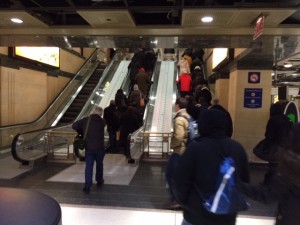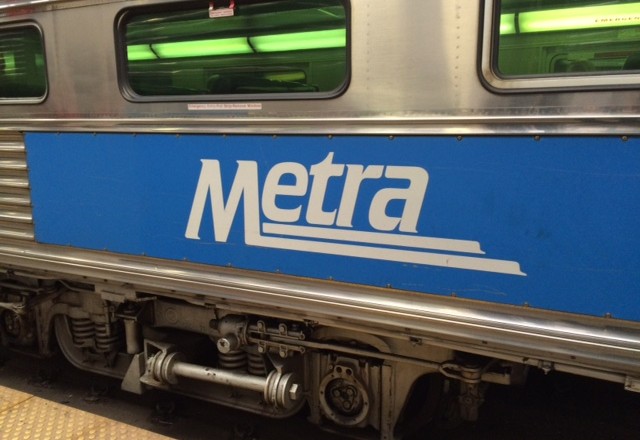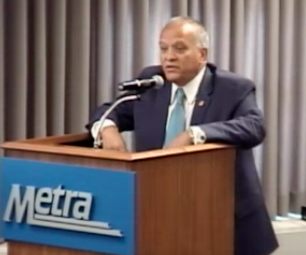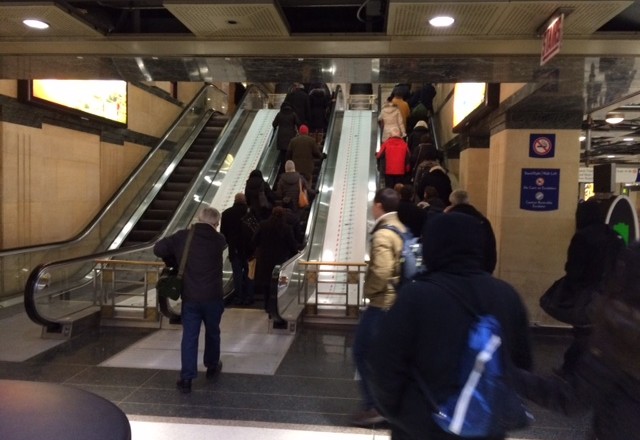 Guest commentary: Union Station is key element in Crossrail plan for unified, regional rail service
Guest commentary: Union Station is key element in Crossrail plan for unified, regional rail service
By Alan Mammoser
Historic Union Station, with grand columns and Great Hall, stands solemnly in the West Loop as is has for nearly a century. But the old station is in the news a lot lately. Recently, Amtrak and Mayor Emanuel announced a $1 billion plan to redevelop this relic of railroading’s golden age. They foresee a new hotel and condos atop the Great Hall, and new towers on adjacent blocks.
It’s an impressive plan that should generate revenue for the city and Amtrak. But it misses the big picture. The big picture for Union Station is much more than a real estate deal. The big picture includes not just the Great Hall but extends across Canal Street to the Concourse. It’s there, in the tracks beneath a nondescript 1960s-era office tower, that the key to revolutionizing Chicago-area transit lay.
Any plan to enhance Union Station’s real estate values should also recognize that its redevelopment can transform Chicago-area transit. Done properly, this plan will give Chicago a world class rail system, one fit for a global city. Done improperly, it could compromise the irreplaceable transportation jewel that Union Station is.
The plan announced in May shows no sense of the need to upgrade the rail network beneath the streets, where Amtrak and Metra face limited space to serve a growing ridership. Worse, its massive scale actually threatens future transit improvements, because its big towers sit directly over the approaches to the station. Their extensive foundation structures could make it harder or impossible to undertake future rail improvements.
Fortunately there is a thoughtful plan afoot that can complement and complete this real estate scheme, ensuring a positive transportation outcome. It’s the Crossrail project of the Midwest High Speed Rail Association (MWHSR).
Here’s a link: www.midwesthsr.org/crossrail-chicago
How does Crossrail work? It starts with Union Station, which once had a beautiful concourse building welcoming passengers to trains. That was squashed under an office tower in 1969, turning the concourse into a crowded, confusing maze that people rush through to get to trains. Now it barely functions, and transit agencies want to open it up and expand its platforms. They have a good plan for that, but it’s just a first step toward what’s needed.
What’s needed is to blast a hole through that concourse. Or better, bore a tunnel under it. What’s needed is to get the trains running through from north to south and from south to north. Such is the logic of Crossrail. Trains will pass through Union Station, moving without interruption from points south to O’Hare Airport and on to the northwest suburbs. And of course they will move in reverse from northwest to points south.
This creates a seamless backbone of regional rail service, one that connects the South Side’s electric service, and the McCormick Place convention center, to Union Station and to O’Hare. But we don’t even need to perform major surgery on Union Station to get started. In fact, we can begin with an existing track that already passes through the station’s eastern side along the Chicago River. This track is the key to opening streamlined, uninterrupted rail service that crosses through the heart of our region.
The beauty of Crossrail is that is makes Union Station the centerpiece of highly unified system, one that unites other big transit expansion plans. These include a long-discussed Red Line extension from 95th Street to 130th Street, and the Mayor’s expressed desire for express rail service to O’Hare. The Mayor and transit agencies look at these as distinct projects serving different needs and people. Hence they are planning for them separately, as if they were projects in silos. Crossrail breaks down the silos. It sees these projects as intimately related and brings them together.
O’Hare express, and improved South Side service, are joined into one initiative when the passage through Union Station is opened. And, when the entire route is electrified for high frequency service, a multitude of new travel options will open for everybody. South Siders will get to job-rich parts of the region much more quickly and easily, even while suburbanites gain better access to the city and the entire region. And Chicago will get the express airport service that is nowadays expected of elite global cities.
Crossrail will bring all transit systems together into a powerful connectivity at Union Station. At this key node, passengers will freely move from Metra to CTA, to Amtrak, to downtown transit, to the South Side, to suburbs in all directions, and of course to O’Hare. It will be where city meets region meets world, a global connectivity point that complements and enhances the airport.
Crossrail will not be inexpensive, but initial modeling by MWHSR shows its considerable cost and service advantages. It will give Chicago a state-of-the-art, 21st Century system, very similar to the kind of system our global rival cities are currently building. And it will prepare our city to become the hub of a Midwest high speed rail network.
Eventually, that one track through Union Station won’t be enough, and we’ll need a much bigger expansion of the station than what’s currently envisioned. This additional expansion also has a thoughtful plan – namely, the proposed West Loop Transportation Center in the city’s Central Area Plan. But we can get started with Crossrail. Public officials and planners should look at it seriously.
They should also ensure that any new development around Union Station “does no harm” to the ability of current and future generations to expand the station’s priceless rail and transit assets. Indeed, revenue streams from new development should contribute to the needed transportation improvements. If a balance is maintained between the real estate and transportation opportunities of this unique asset, then we’re confident that Union Station’s renewal can transform regional transit – let’s do it.
Alan Mammoser is an independent writer and regional planner in Chicago. He writes about cities, energy, environment, infrastructure and planning. He is coauthor of ‘Beyond Burnham, An Illustrated History of Planning for the Chicago Region’ (Lake Forest College Press, 2009). He writes the weblog, www.warmearth.us


